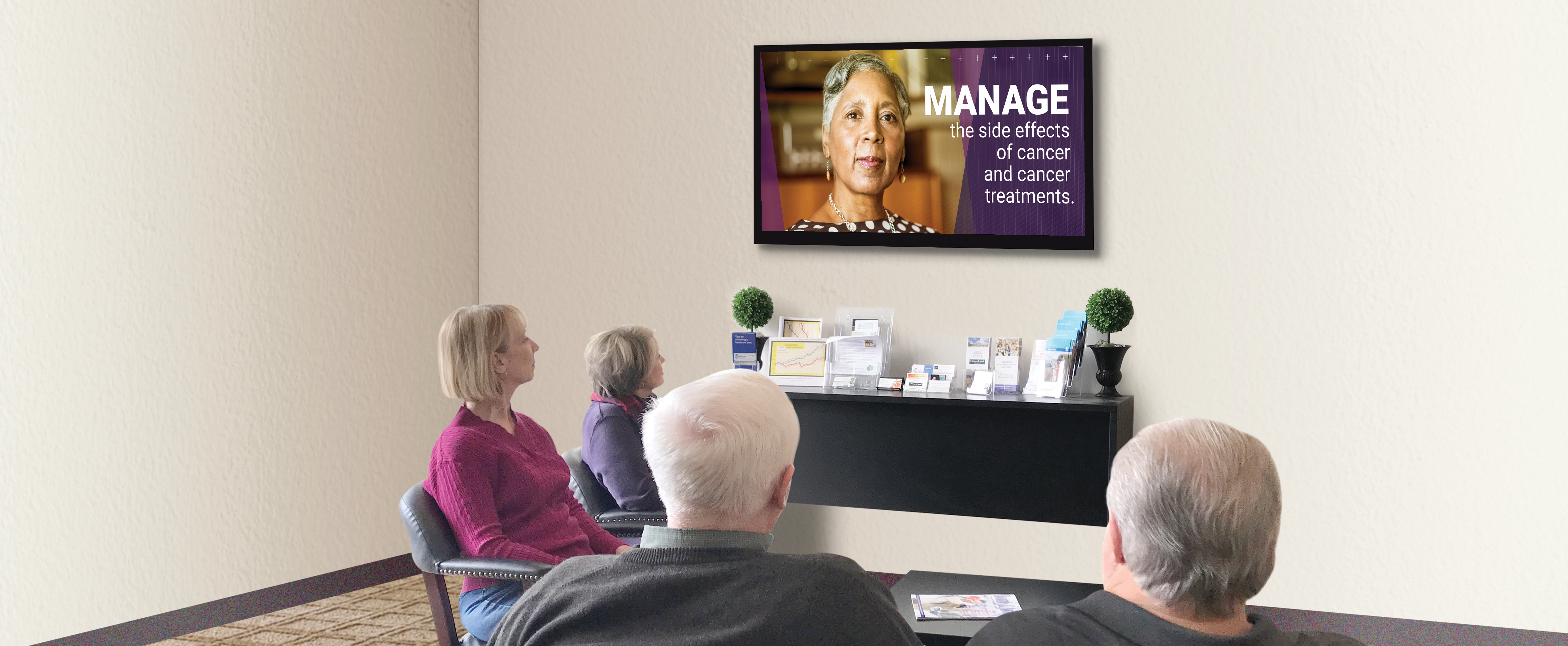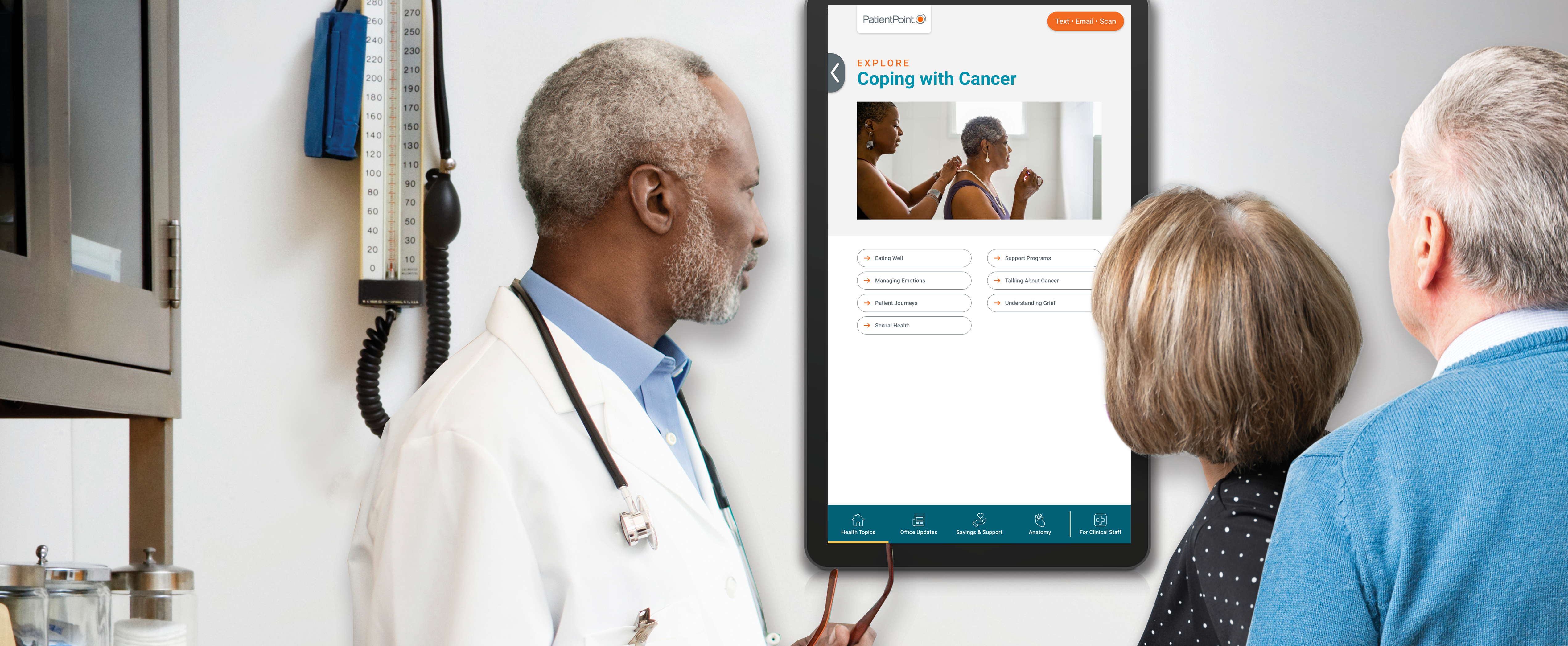Technology can bridge the gap between what patients currently know and what they need to know. It helps them understand their diagnosis and treatment, no matter their level of education or other social determinants of health. Follow these tips for leveraging technology at your practice so you can improve health literacy and ultimately improve health outcomes for your diverse patient population.
Make the wait educational and inspirational

1. Create understanding with health education
Cancer patients still spend a significant amount of time in waiting rooms—an average of 15.3 minutes.1 Use this opportunity to educate patients through technology, while they’re actively thinking about their care. Share health information, which can help them understand their own condition, treatment, side effects and health. This information should prompt them to talk to their doctor about any concerns they’re having. And it should help build trust and spark conversations that improve outcomes.
2. Build awareness of services, screenings and care goals
You can also show preventive screening reminders, leading more patients to talk to their doctor about scheduling these screenings and ultimately helping you meet practice goals. Don’t forget to promote your patient portal too, letting patients know the benefits of viewing test results here. Even if portal usage may seem like common knowledge, it’s important to remember that not every patient knows about it, so it’s worth explaining. This mindset is crucial to have when sharing any health information; you don’t want to assume someone’s level of understanding and use medical jargon that may confuse them.
3. Inspire and motivate patients and caregivers
All of this waiting room education should empower patients to enter the exam room feeling more knowledgeable and prepared to speak with their provider. Include inspirational patient stories and relaxing content as well so they, and their caregivers, have a more positive experience overall.
Is your practice missing any patient engagement tech? Find out in this checklist.
Incorporate tech into the appointment

1. Use visual aids
Technology can continue to be a source of education in the exam room. Patients who are visual learners, and many of them are, will benefit from 3D anatomicals, videos and models that allow the doctor to explain diagnoses, treatments and procedures to patients. A benefit of using technology, rather than a poster or brochure, is that you can access hundreds of models and videos, showing both health and disease-state anatomy.
2. Facilitate their personal learning
The most ideal solution should also provide patients with multimedia they can access on their own while waiting an average of 12.5 minutes without a provider present.1 Patients can read articles about their health condition and get healthy living tips to further their learning, rather than scrolling through their phone. They can then reference the content when speaking with their doctor, leading to a more engaging exam room discussion.
3. Send education home with patients
And if patients want to read more articles at home, they can text or email the content from the solution to themselves. Providers can do this as well, which means less time spent printing out take-home materials the patients may lose. They may even want to send articles to caregivers who couldn’t make the appointment, helping everyone stay aware of what was discussed.
Learn how technology can also improve the patient experience at your practice in our e-book, “Embracing Patient-centered Care to Improve Outcomes.”
12022 Nationwide Web Surveys of 853 respondents who visited physician offices installed with the PatientPoint Waiting Room & Exam Room Digital Screens Programs. Data as of 12/31/2022.

